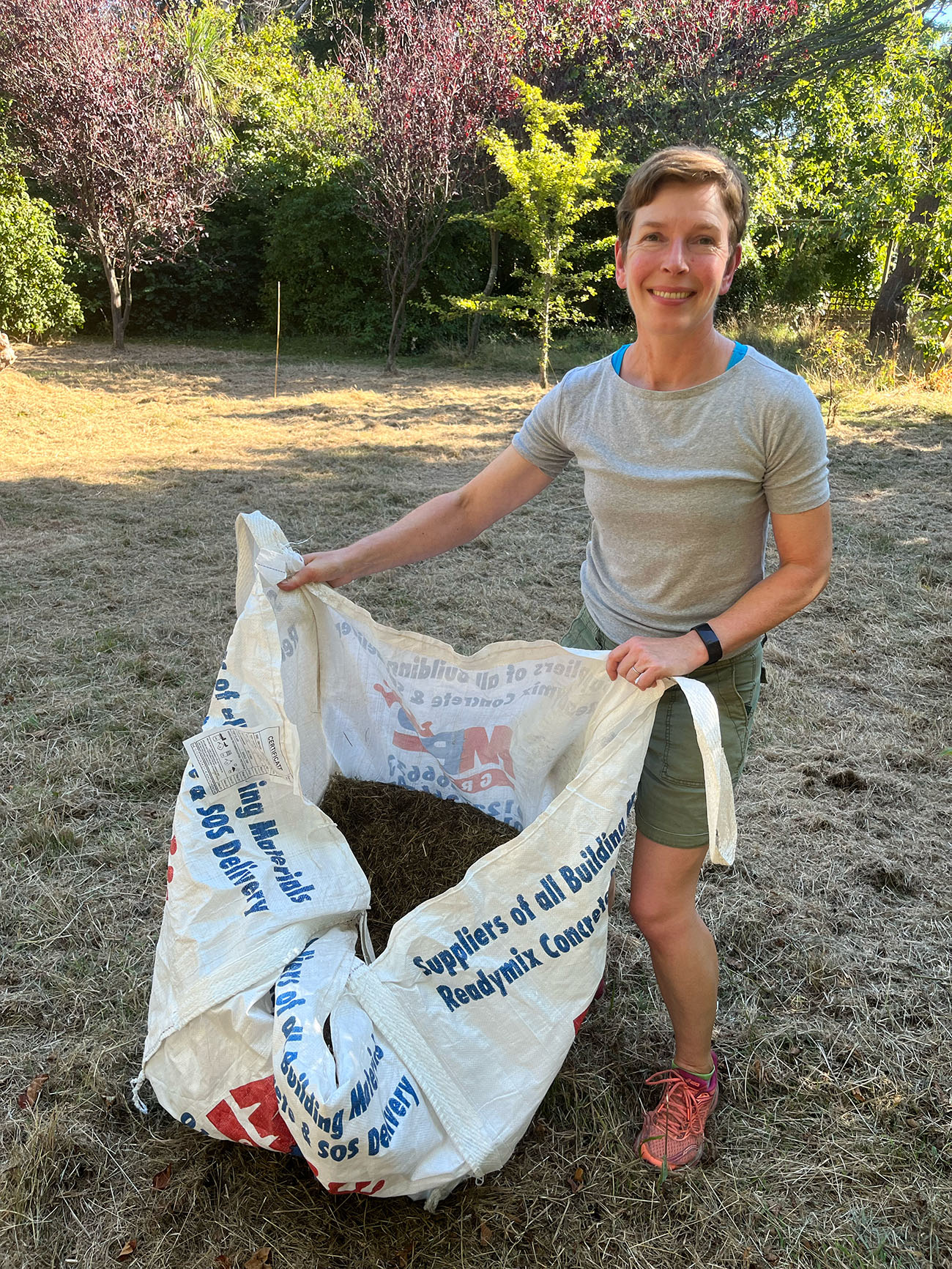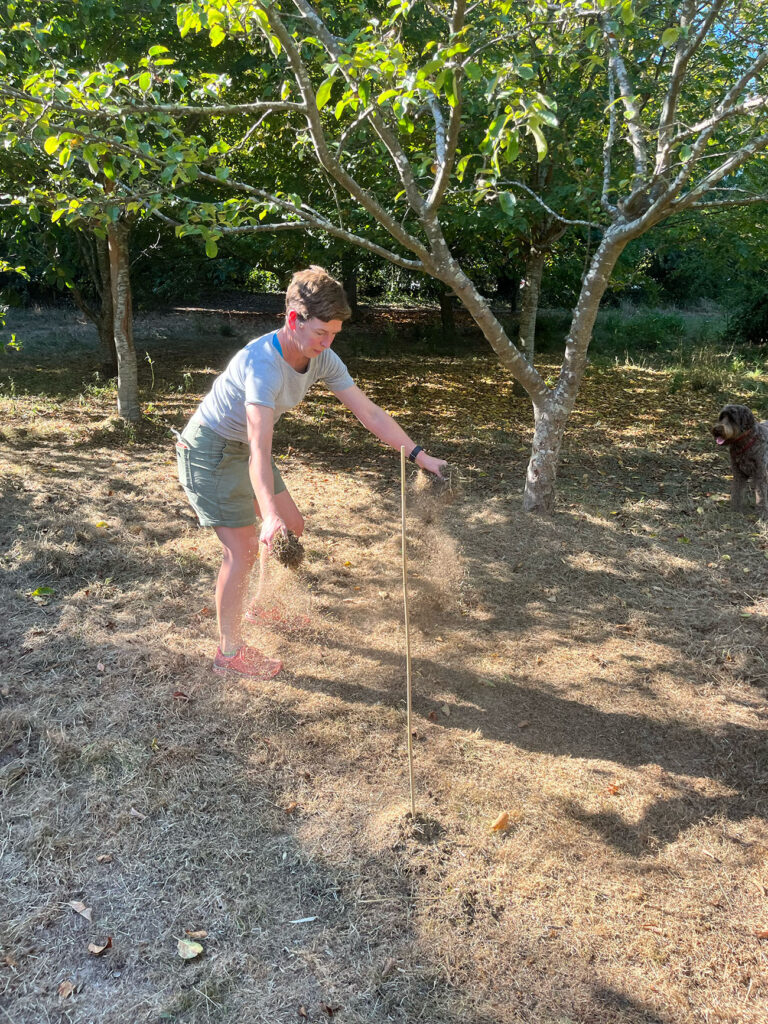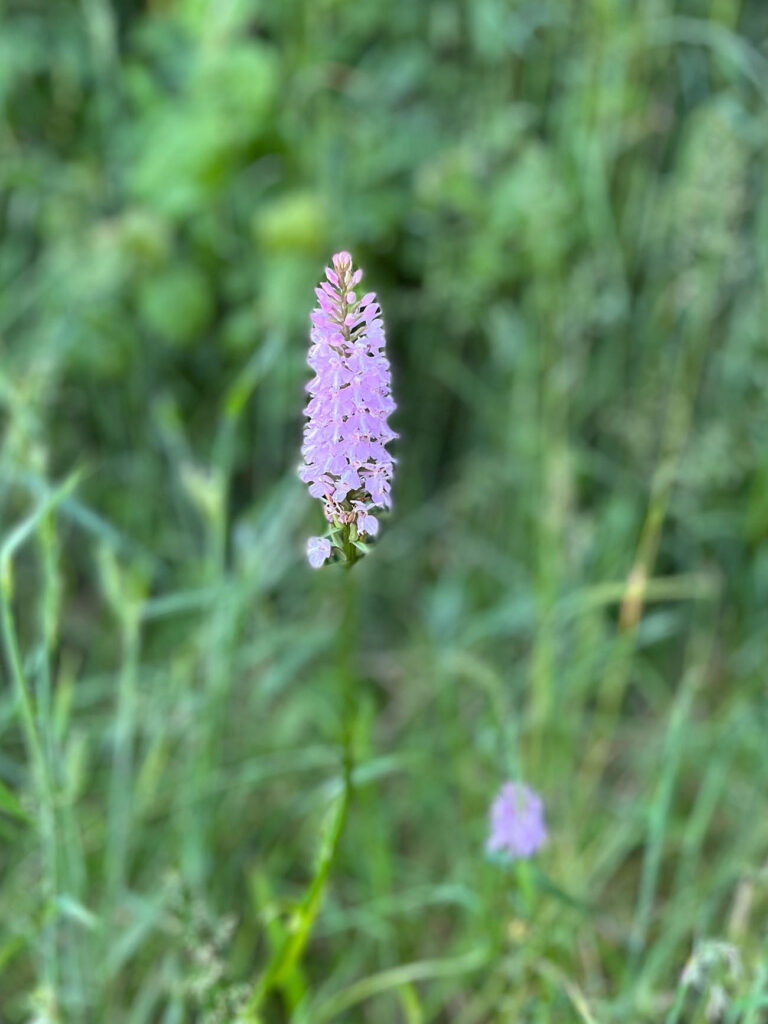by Louise Bell
Share
by Louise Bell
Share

For the past two summers, we’ve been lucky enough to get our hands on a couple of tonne bags full of strewings cut from the famous meadows at Great Dixter, just a few miles inland from us at Northiam.
Dixter’s meadows surround the house and formal garden, creating a seamless transition to the fields, woodlands and countryside beyond. From the narcissi and fritillaries of early spring to the knapweed and waving grasses of late summer, the meadows teem with life, and play a major part in making Dixter one of the most biodiverse places in the country. Our own meadow area might not be quite as spectacular yet, but it’s nevertheless doing its bit to enhance biodiversity, attracting pollinators and providing a haven for insects and wildlife.

Come late summer, when the majority of plants have set seed, our wonderful gardener Dave cuts the meadow. Drawing on advice from the team at Dixter, Dave has then given certain areas where the plant life is already more diverse another, shorter, cut to take the plants right back to the soil.
The strewings are then shaken over those areas and left for a couple of days for the rest of the seeds to drop out, before we rake them up. The trick with a meadow is to keep the soil poor to reduce the vigour of the grass which will otherwise out-compete the other species – so you don’t want your strewings rotting down and acting like a mulch or fertiliser.

The other secret weapon in the war on grass is yellow rattle (Rhinanthus minor). So named for the sound its seeds make rattling in their pods at the end of the season, it lives off nutrients in the roots of grasses, reducing their vigour and so creating space for other plants to thrive. Both Dave and I agreed there was lots more yellow rattle in the meadow this year – a great sign of things to come.

It was also really exciting to see five common spotted orchids nestling under the wiggly hazel at the bottom of the meadow. It’s too soon for those to be Dixter orchids – if we have been lucky enough to get a bit of orchid seed, it will be at least 3-5 years before they flower. As with all gardening projects, creating a truly diverse meadow – not to mention a Dixter-style abundance of orchids – will take patience and time. Fingers crossed we’ll see more of their delicate beauty in the springs and summers to come.

